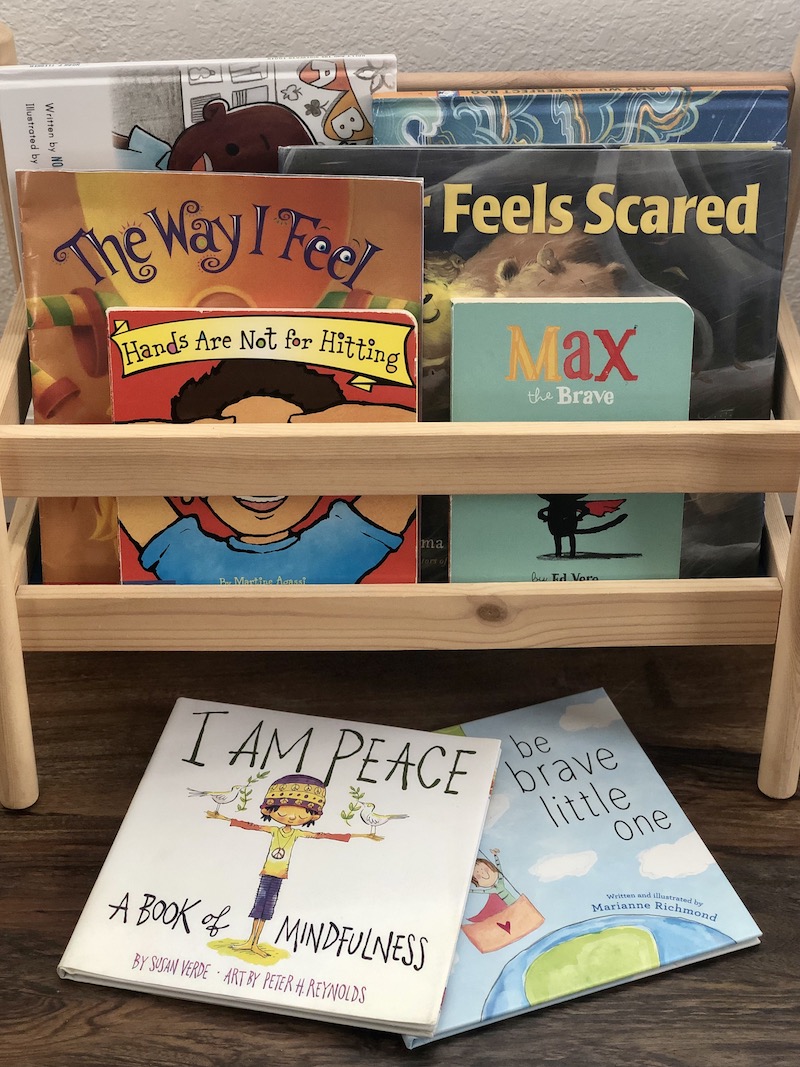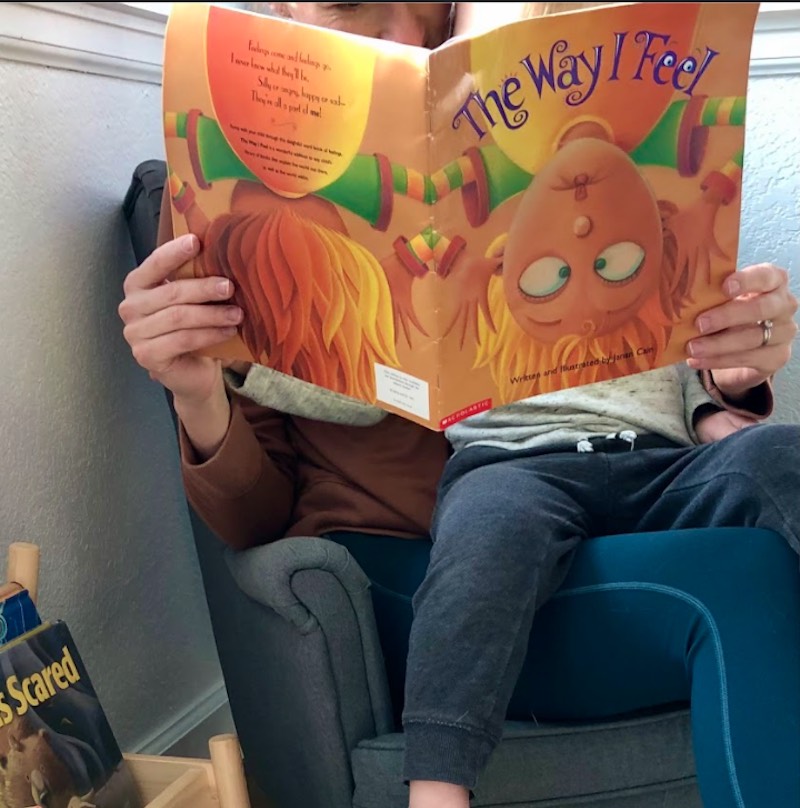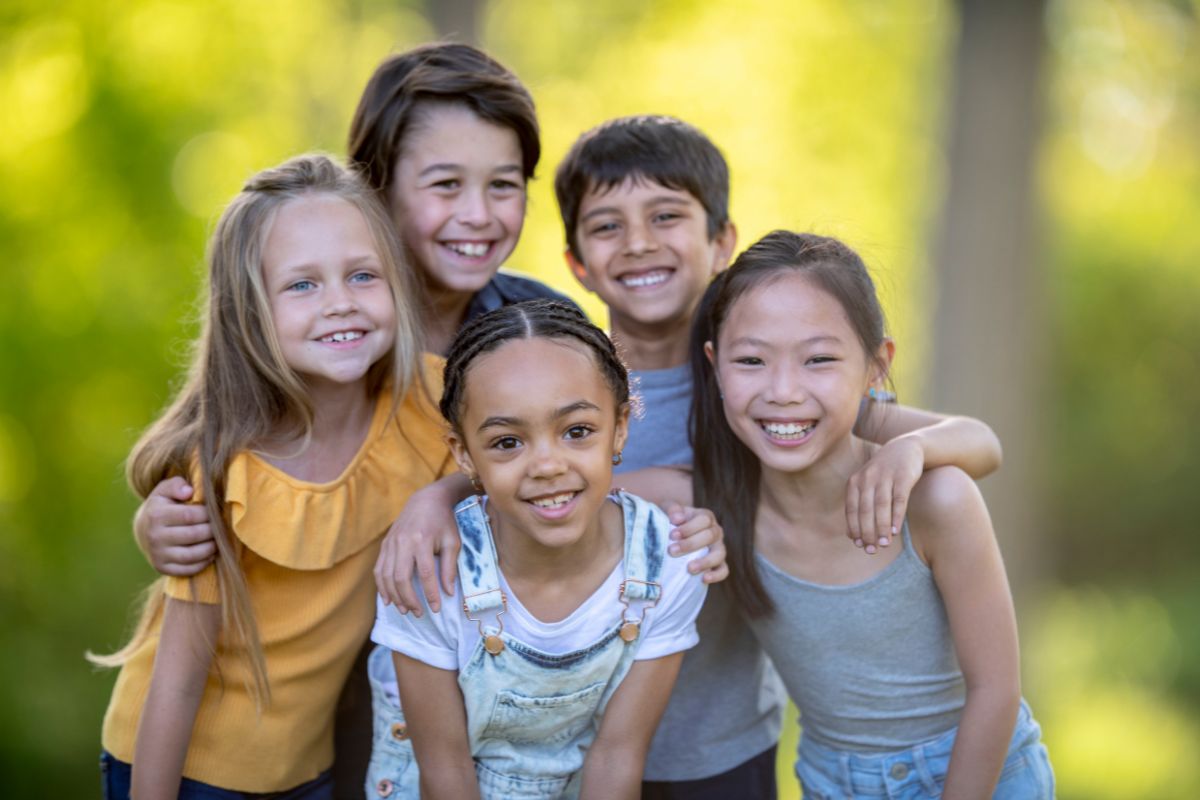Big & Little Feelings

All children are social-emotional beings. Their feelings rise and fall; they ebb and flow like waves in the sea. They communicate how they feel in big and little ways: from whole body excitement to a bashful little smile, to a full blown tantrum, to a cross-armed pout. We, as the adults in their lives, are charged with recognizing these signs, whether subtle or pronounced. A calm demeanor, infinite patience and guidance is required to help them navigate these turbulent waters.
As an early childhood and elementary educator, I have had the privilege of guiding hundreds of children along their individualized educational journeys. My students over the years have ranged from four to eight years old. In the last three years, my role as teacher took on a new name when I became a mom. From the days of infancy, I have seen my own children (aged 3 and 5 months) look at the world with wonder, joy, and excitement. They have been wrapped in my arms during moments of sorrow, worry, fear and a hundred other means of expression… often feeling several ways at once. Both at home and in the classroom, I have had difficult moments, when my own emotions have escalated as the child’s does. In the classroom environment, it can be challenging to support the big feelings of one child when there are upwards of thirty children, all learning how to address their own emotions and reactions at once. Be it from the lens of a parent or a classroom educator, I have learned that being the support person in these times of emotional need is difficult, as I am sure we all can attest. From these challenges, I have learned there are three big feelings I myself must channel when in these moments. I chant them like a mantra: “Be calm. Be patient. Be supportive.” It is a matter of connecting with the child before correcting a behavior, and keeping in mind that no matter how big or little the child’s feelings are, their feelings need validation and guidance.

Taking a breath, or pausing, is a strategy that most adults use when confronted with a challenge: solving a problem, collaborating with a team, having a difficult conversation with a friend. A deep breath calms the nerves and refocuses the mind. This simple yet effective strategy is one that we all have access to at any moment. For children, it is easy to learn and promotes self-discipline. When modeled by an adult, a teacher or family member, children can see that calmness can come as a result of intentional breathing. In my classroom, breathing is practiced on a daily basis. When the community comes together for our Morning Meeting, we settle into our space and start with a breath. We talk about feelings, giving them appropriate names, and practice different visualizations for breathing. From a box breath (drawing a box in the air, inhaling on the vertical lines and exhaling on the horizontal) to a balloon breath (placing the hands on our bellies and feeling our chest and stomachs inflate with our inhales), the children learn to use their bodies to regulate both big and little feelings. Other strategies, like having a calm, quiet and safe space to go during an emotional time, closing one’s eyes for a moment, hugging a pillow or a loved one, redirecting focus with soft music or a walk outside are all equally helpful and can be used by adults and children alike. I have learned that when a variety of strategies are modeled, a child will learn to pause and take a breath. With each inhale, “Be calm, be patient, be supportive” comes to the forefront of my mind.
Patience, being the middle child of my mantra, can be more challenging to channel when supporting a child who is in the midst of a full blown tantrum or when a whole group of children gets squirrely. The words of Dr. Jane Nelsen, author and founder of the Positive Discipline approach, come to mind in these moments. She has shared that “most young children’s misbehavior is a sort of ‘code’’ designed to let you know that they don’t feel a sense of belonging and need your attention, connection, time and teaching.” I know that if my own emotions are escalated, it will be very challenging for me to connect and give my attention to supporting children in de-escalating their big feelings and redirecting their behavior. You know that saying, “patience is a virtue”? It is truly virtuous because it is both useful and difficult. It is easy to become frustrated or overwhelmed when tensions are high. Patience must be practiced to overcome this natural default setting. Our capacity to work through challenges is a learned skill and trait. Like calming strategies, it can be modeled. When a relationship with your children is established, and when you take time to understand why a child feels a certain way, you can begin to find the calm in the storm and to navigate through it with a level head. Heightened emotion in any setting results in a variety of behaviors and there is a lack of clarity, for both child and adult.
Dr. Nelsen’s approach also tells us that “children will listen when they feel listened to”. This is the support, the guidance, the connection and the teaching that is so valuable to help create the necessary conditions to help young children learn. We must validate their feelings, just as we as adults want our feelings to be taken seriously. As simple as saying “I can see that you’re angry because a friend took your toy” and following up with “do you need a hug before we work together to solve the problem?” supports their feelings while giving them a strategy to calm down and foster self discipline. The same goes for moments of silliness and happy outbursts. “Wow! Everyone is so excited to go on the field trip! Let’s sit together and take a breath before we talk about our trip”. Connecting with a child before working to correct the behavior lets them know that you are there for them and that they can rely on you for guidance and support when they are having big and little feelings.

When working with children, I always keep in mind that developmentally, the frontal lobe, the part of the brain that is the emotional control center, is still growing, and won’t be fully developed until they are in their early 20s. To leave a young child on their own to manage a strong feeling would be like watching them flounder in the deep end when they do not yet know how to swim. As an adult, I can choose to let them sink or swim, and when given a decision like that, how do I not choose the latter? The frontal lobe, responsible for our emotions, impulses, problem solving and social behaviors has a tremendous amount of ground to cover, and we must realize that these big and little feelings are entirely developmentally appropriate. That means that all emotions can be hard to manage, well into the teens and young adulthood. Even today, picture adults dealing with road rage, dropping a glass bowl, and being frustrated with technology. Emotions are difficult to manage throughout our adult lives, but practice in any setting can help guarantee improvement. Being able to empathize with children is essential, as we struggle to calm our bodies, to keep our cool and to regulate the vast range of emotions that come with the ups and downs of daily life. As adults in children’s lives, we need to be role models and clearly demonstrate what to do when we have big feelings or even small ones. By being calm, patient and supportive, we can avoid power struggles, model positive strategies for emotional regulation, and be the lighthouse that children can rely on. It is our responsibility to guide these currents and to aid children as they learn strategies to cope.
This article is available and can be accessed in Spanish here.









